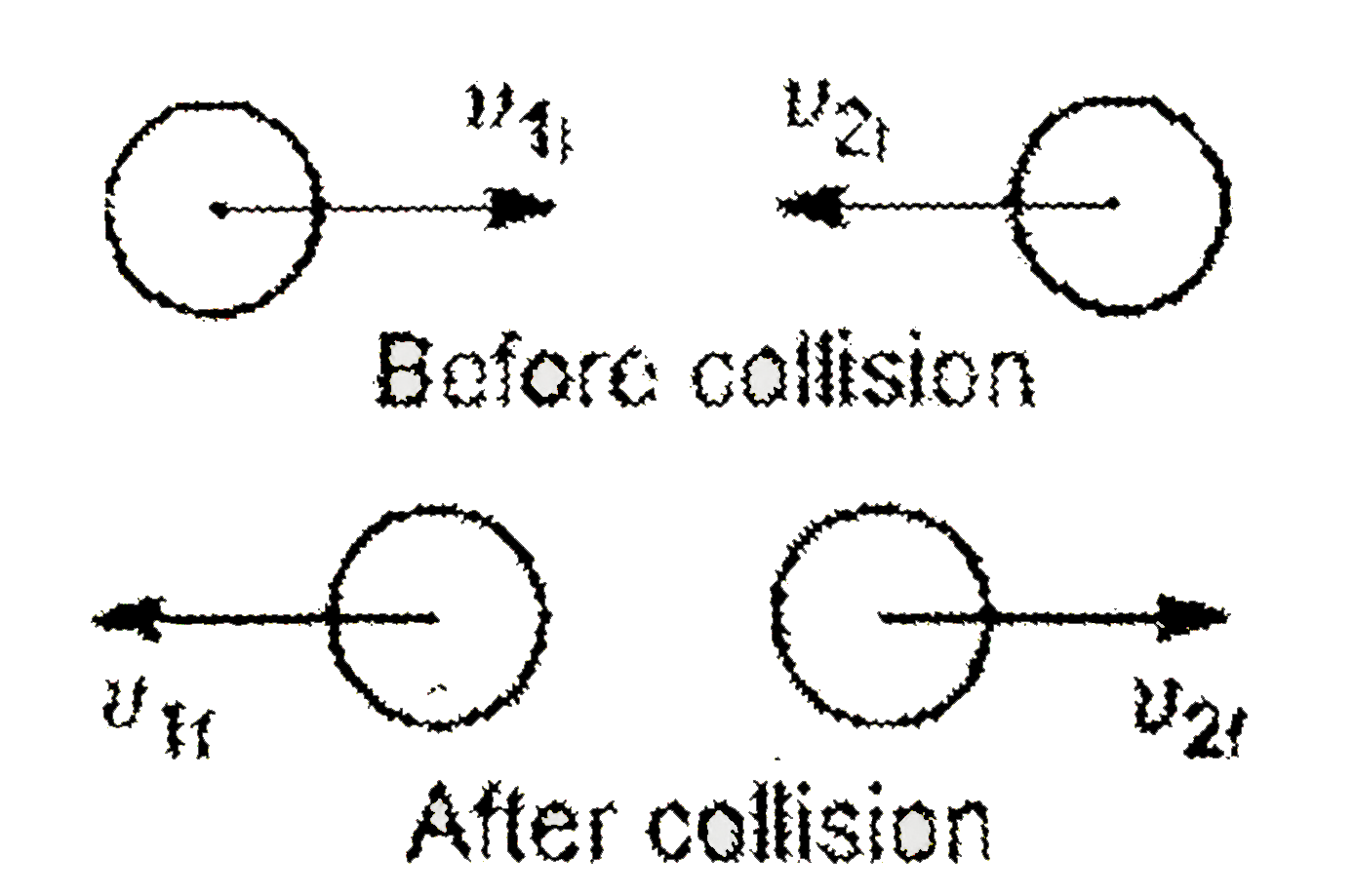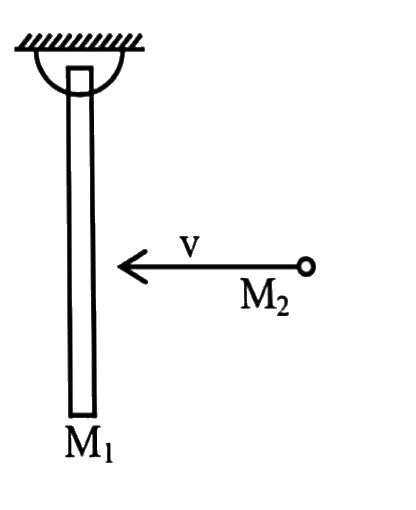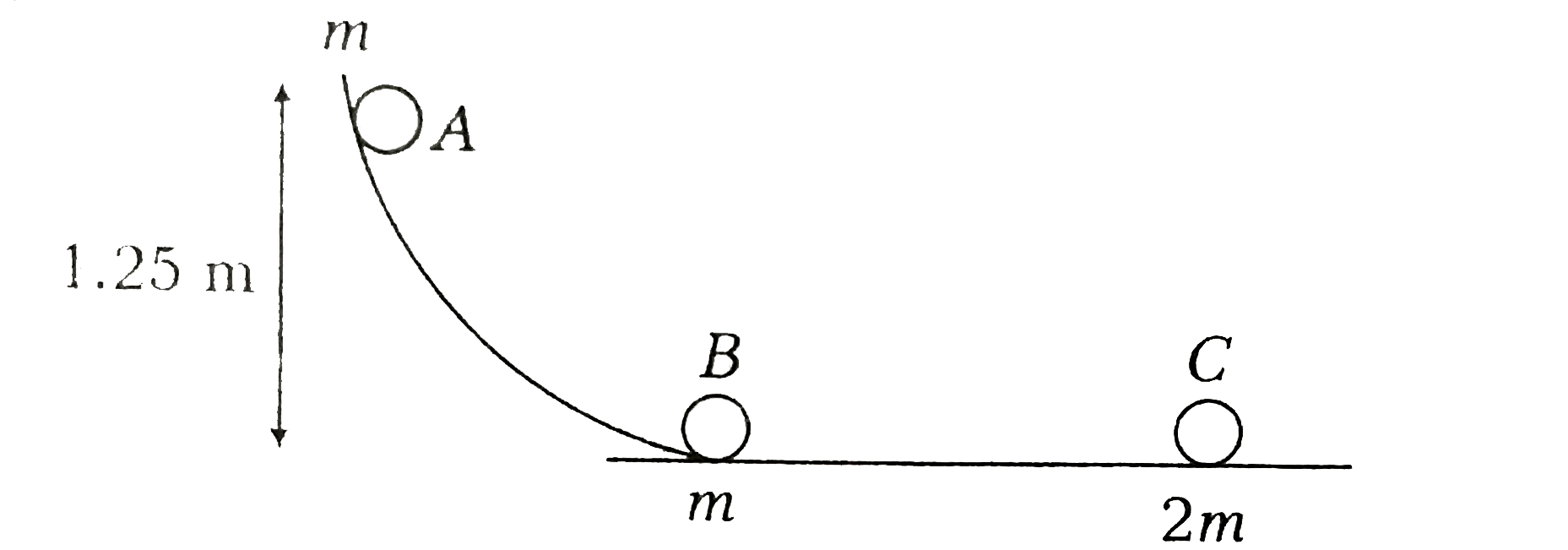consider two particles that unedergo an elastic collision on a fricationless surface as shown in fig 4E.45 one particle of mass m2 is at rest initially.

Step by step video & image solution for consider two particles that unedergo an elastic collision on a fricationless surface as shown in fig 4E.45 one particle of mass m_(2) is at rest initially. by Physics experts to help you in doubts & scoring excellent marks in Class 11 exams.
Topper's Solved these Questions
- BOOK - ANURAG MISHRACHAPTER - IMPULSE AND MOMENTUMEXERCISE - Level 1110videos
IMPULSE AND MOMENTUM
- BOOK - ANURAG MISHRACHAPTER - IMPULSE AND MOMENTUMEXERCISE - L-221videos
IMPULSE AND MOMENTUM
- BOOK - ANURAG MISHRACHAPTER - IMPULSE AND MOMENTUMEXERCISE - matching3videos
IMPULSE AND MOMENTUM
- BOOK - ANURAG MISHRACHAPTER - FORCE ANALYSISEXERCISE - Matching type13videos
FORCE ANALYSIS
- BOOK - ANURAG MISHRACHAPTER - RIGID BODY MOTIONEXERCISE - MATCH THE COLUMN12videos
RIGID BODY MOTION
Similar Questions
A uniform rod of mass M1 is hinged at its upper end as shown in the figure . A particle of mass M2 which is moving horizontally, strikes the rod elastically at its midpoint. If the particle comes to rest after collision then the value of M1M2 is
 View Solution
View SolutionA body of mass m1 moving at a constant speed undergoes an elastic head on collision with a body of mass m2 initially at rest. The ratio of the kinetic energy of mass m1 after the collision to that before the collision is -
View Solution
Knowledge Check
- Question 1 - Select One
A particle A of mass m initially at rest slides down a height of 1.25 m on a frictionless ramp, collides with and sticks to an identical particles B of mass m at rest as shown in the figure.

Then, particles A and B together collide elastically with particle G of mass 2m at rest. The speed of particle G after the collision with combined body (A+B) would be (Take, g=10ms−2)A2ms−1B1.25ms−1C2.5ms−1D5ms−1 - Question 2 - Select One
A particle P moving with speed v undergoes a head - on elastic collision with another particle Q of identical mass but at rest. After the collision
ABoth P and Q move forward with speed v2BBoth P and Q move forward with speed v√2CP comes to rest and Q moves forward with speed vDP and Q move in opposite directions with speed v√2 - Question 3 - Select One
A particle P moving with speed v undergoes a head -on elastic collision with another particle Q of identical mass but at rest. After the collision the collision
ABoth P and Q move forward with speed v2BBoth P and Q move forward with speed v√2CP comes to rest and Q moves forward with speed vDP and Q move in opposite directions with speed v√2
When two spheres of equal masses undergo glancing elastic collision with one of them at rest after collision they will move
View SolutionConsider elastic collision of a particle of mass m moving with a velocity u with another particle of the same mass at rest. After the collision the projectile and the struck particle move in direction making angles θ1 and θ2 respectively with the initial direction of motion. The sum of the angles. θ1+θ2, is
View SolutionConsider elastic collision of a particle of mass m moving with a velocity u with another particle of the same mass at rest. After the collision the projectile and the struck particle move in directions making angle θ1 and θ2 respectively with the initial direction of motion. The sum of the angles θ1+θ2 is :
View SolutionConsider elastic collision of a particle of mass m moving with a velocity u with another particle of the same mass at rest. After the collision the projectile and the struck particle move in directions making angle θ1 and θ2 respectively with the initial direction of motion. The sum of the angles θ1+θ2 is :
View SolutionConsider elastic collision of a particle of mass m moving with a velocity u with another particle of the same mass at rest. After the collision the projectile and the struck particle move in direction making angles θ1 and θ2 respectively with the initial direction of motion. The sum of the angles. θ1+θ2, is
View Solution

